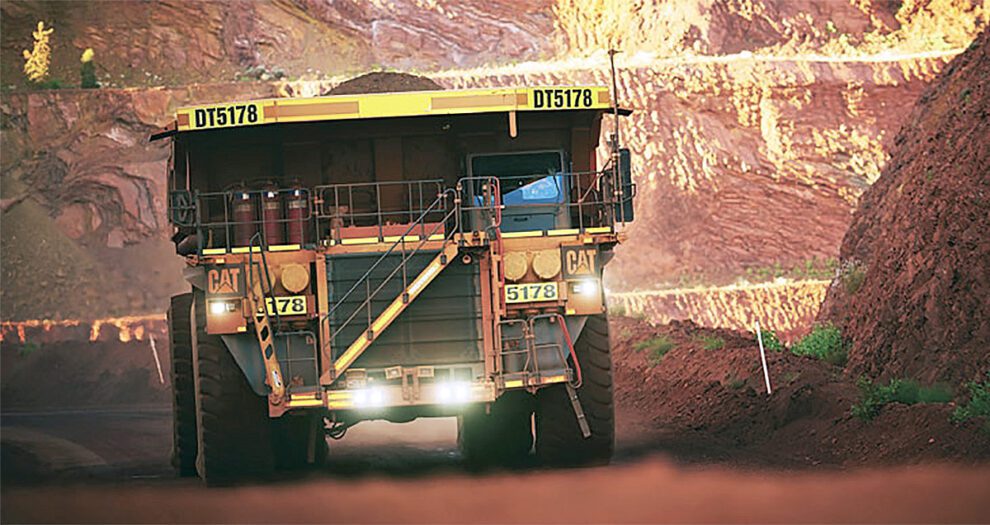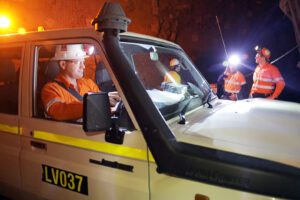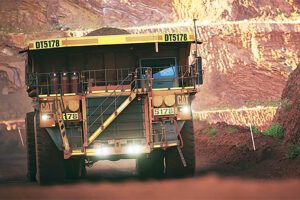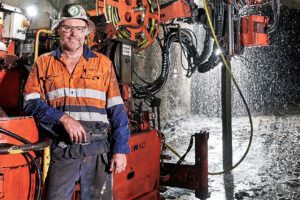Since the pandemic began mining companies have purchased a lot more autonomous heavy vehicles.
Coronavirus (COVID-19) prompted up to 13 resources producers at 23 different locations to order a higher volume of driverless dump trucks since the year 2020.
“Caterpillar has grown the number of autonomous trucks in operation by 40 per cent in the past two years. We believe that automation is one of many keys to implement technology that unlocks the value miners need when it comes to the energy transition towards more sustainable operations,” Caterpillar Resource Industries group president Denise Johnson said in a public statement.
Caterpillar recently autonomously hauled more than 5 billion tonnes of material using Cat MineStar Command remote systems. More than 550 mining trucks are equipped with the technology across three continents, including Australia. They have also almost travelled the combined distance between Earth and Mars with zero loss-time injuries.
“In 2013, we placed our first fleets of autonomous trucks in Western Australia at Fortescue Metals Group’s Solomon and BHP’s Jimblebar [mines]. Since that time trucks using Command for hauling have safely traveled nearly 200 million km, more than twice the experience in autonomous operations of any automobile manufacturer,” Johnson said.
Subsidiary Cat Mining revealed proponents are not slowing down and continuing to grow automated heavy vehicle fleets. Smaller mineral producers are placing orders too.
“In 2023 we will expand Command for hauling to the 139-tonne truck class at ioneer Limited’s Rhyolite Ridge lithium-boron mine. This is the first lithium-boron greenfield project … to use an autonomous haulage system,” vice president and general manager Sean McGinnis said.
“Whereas large mines with fleet sizes of more than 70 trucks were the early adopters of the technology, we are [also] seeing economic viability for autonomy at smaller mines with a fleet of less than 15 trucks.”
Related articles
Driverless truck demand soars due to lack of manpower says automation boss
Mining giant accelerates automation after fewer accidents
Mining giant approves electric driverless trucks
Mining giant investigates driverless vehicle accident.













What safeguards and/or assurances are in place that once on site operations are largely and reliably undertaken from a ROC, that the company(s) will not seek to relocate the ROC(s) offshore where it is able to access a cheaper, foreign labour market?
Just like a Telstra call centre…
Because once that is permitted to occur, the Australian people will see next to ZERO returns for thier countries natural resources. There will be much less money injected into the income stream of the Australian working class, (which is spent by Australians, at Australian businesses largely.) there will be less income tax for fed/state budgets…
The State/Federal Government will still get thier royalties but we all know how much of those royalties is p#**ed up the wall and/or syphoned off into other people’s pockets, and how much actual value the Australian people get in return for that money.
Let’s not forget to mention that ‘our’ Government will most likely continue to subsidise the industry ‘to attract investment’ and at the expense of the Australian taxpayer. (Just how do you think the mining industry pays only a fraction for its fuel compared to the Australian public???)
I’m not nieve, the industry will continue to seek ever increasing profit margins and/or ROI and I understand that automation will inevitably play a larger role in the industry, but I think we are doing NEXT TO NOTHING to ensure a decent piece of the pie stays here on Australian shores.
AND IN ACTUAL AUSTRALIAN HANDS.
*Just like we see communities in agricultural regions economically DECIMATED by the domination of the consumer markets by only a handful of semi-cooperative entities, we will see many industry sectors face even larger struggles if the resource sector is allowed to access offshore labour markets for its day-to-day operational requirements.
And once our domestic labour market in the resource industry is gone, it’s gone for good.
Remember the 2008 GFC, where the Australian economy ‘rode on the back of a dump truck’ out of the worst of the effects?
You don’t suppose that was 100% due to mining royalties do you?
No, that was largely thanks to the massive economic contribution that a domestically sourced labour market made.
*Just add up, A) what the national costs are to the mining sector for its labour force and B) the income tax this income produces.
Now, subtract that income from the COMMUNITIES income stream (people buying things at thier local retailer.) and subtract the taxable income from the Gov budgets that it ‘should’ be spent on.
I can’t understate the implications of offshore ROC’s for the real-world Australian people and communities.